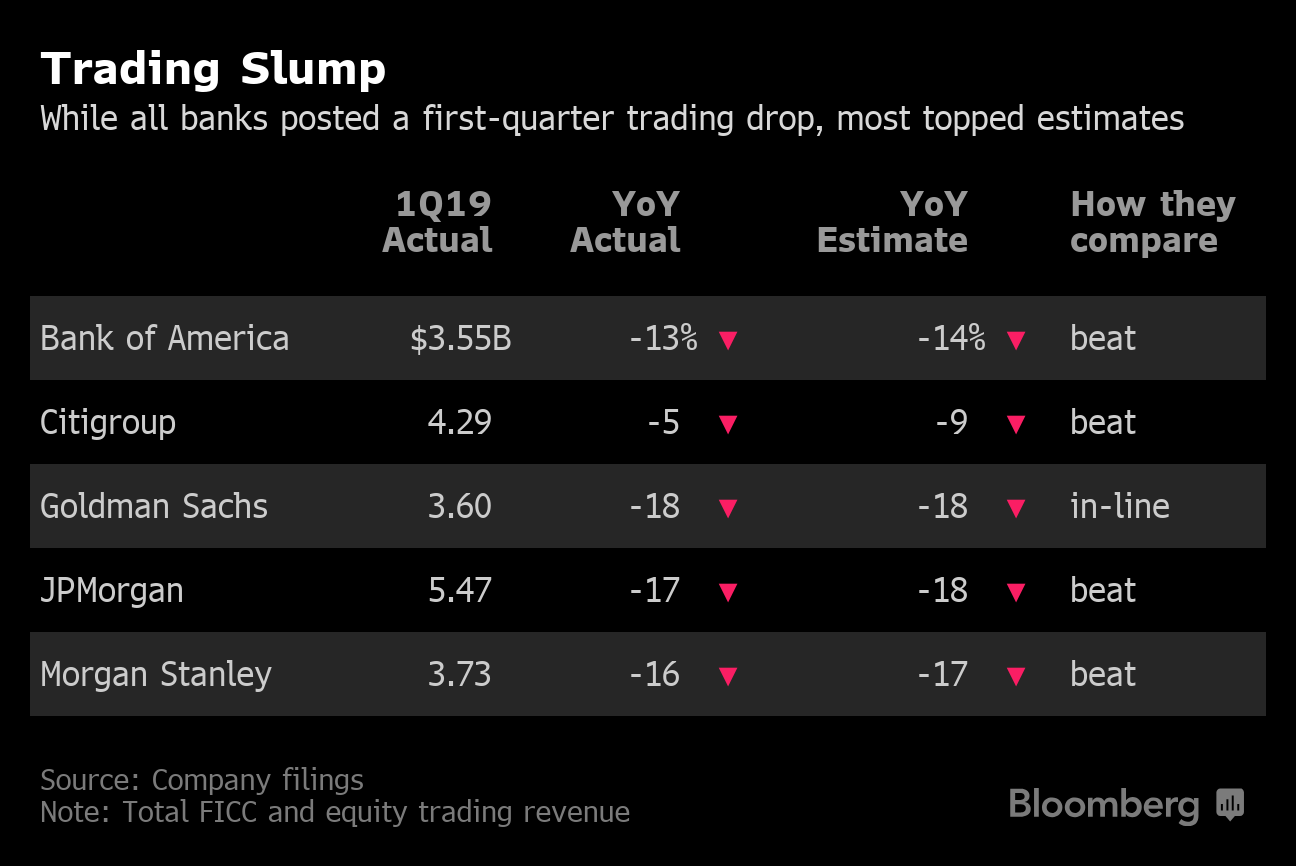Apr 17, 2019
Morgan Stanley brokers, traders counter steep drop in dealmaking
, Bloomberg News

Morgan Stanley’s brokers and bond traders weathered tough markets as the firm posted a smaller trading decline than analysts expected and a surprise jump in wealth-management fees.
Bond-trading revenue fell nine per cent, a smaller drop than at rival Goldman Sachs Group Inc. (GS.N) and less than the 15-per-cent slump analysts had estimated. Revenue rose at the firm’s wealth and asset management units while other competitors saw declines. Those results helped Morgan Stanley counter the biggest slump in investment-banking fees on Wall Street.
The company generates nearly all its revenue from fees tied to the markets, a larger share than rivals such as JPMorgan Chase & Co. (JPM.N) that leaned on their retail-banking units in the first quarter. Trading fell at all Wall Street firms as clients remained on the sidelines after a tumultuous end to 2018 and some new issues were delayed by a U.S. government shutdown at the beginning of the year.
Morgan Stanley’s bond traders recovered after a challenging fourth quarter. Equities revenue, however, fell short of expectations. The bank has been the No. 1 stock-trading shop on Wall Street.
The 24-per-cent drop in investment banking was led by declines in equity and debt underwriting. It still ended last year as the top banker for initial public offerings, and has a key role in the listings of companies such as Uber Technologies Inc., which should help support the division into this year.
Morgan Stanley shares rose to US$48.55 at 7:27 a.m. ET in early New York trading after closing at US$47.02 on Tuesday. They have gained 19 per cent this year, more than the 15-per-cent increase in the S&P 500 Financials Index.








